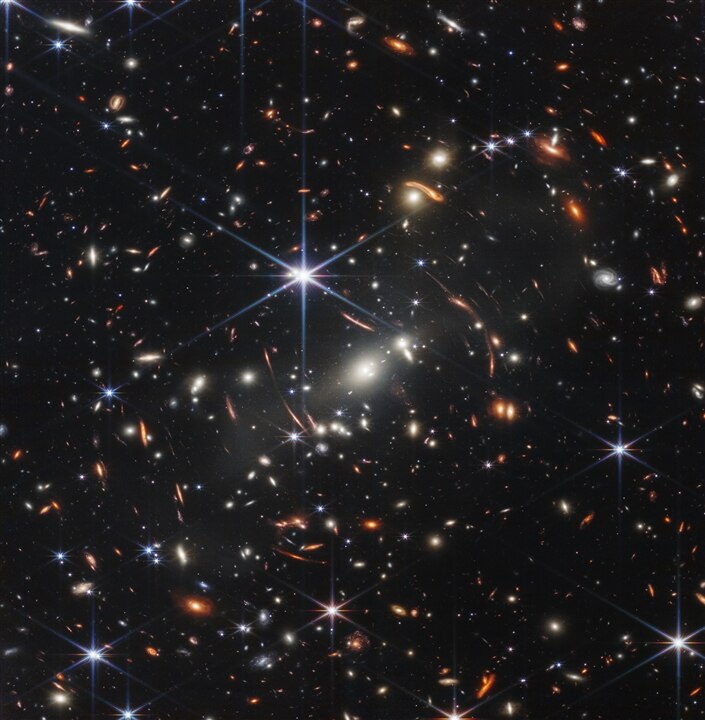
James Webb captured its first image, which shows the SMACS 0723 galaxy cluster in the distance universe along with numerous galaxies behind it. (Image Credit: NASA, ESA, CSA, and STScI)
President Joe Biden revealed the first colorized, deepest and sharpest image of the distant universe captured by the James Webb telescope. NASA will share the remaining four images on July 12th. You can view the galaxy cluster SMACS 0723 in the image, captured via Webb's Near-Infrared Camera (NIRCam), "as it appeared 4.6 billion years ago." The galaxy cluster mass works like a gravitational lens, bringing other galaxies into sharp focus. Those other galaxies have faint structures, like star clusters and diffuse features. Researchers plan to learn more about the galaxies' ages, masses, histories, and compositions.
"Released one by one, these first images from the world's largest and most powerful space telescope will demonstrate Webb at its full power, ready to begin its mission to unfold the infrared universe," NASA says.
"This first image from NASA's James Webb Space Telescope is the deepest and sharpest infrared image of the distant universe to date. Known as Webb's First Deep Field, this image of galaxy cluster SMACS 0723 is overflowing with detail. Thousands of galaxies – including the faintest objects ever observed in the infrared – have appeared in Webb's view for the first time."
This is the highest-ever resolution deep space image ever taken, with the light captured in this photo traveling for over 13 billion years.
"If you held a grain of sand at the tip of your finger at arm's length, that's the part of the universe that you're seeing. Just one speck of the Universe," NASA explains.
While it took Hubble 2 weeks to snap an image of this deep space field, it took the James Webb telescope only 12.5 hours. It outperformed Hubble's infrared wavelength depths when it captured images of deep fields.

The Hubble Space Telescope's image of the same area Webb captured. (Image Credit: NASA)
It took NASA over five years to decide which images the Webb should capture first. On July 12th, NASA, in collaboration with the Canadian Space Agency (CSA) and European Space Agency (ESA), plans to reveal the other four full-color images and spectroscopic data during a live TV broadcast from the Goddard Space Flight Center in Greenbelt, Maryland.
NASA shared the five targets that would be revealed in the first photo set, including the Carina Nebula, WASP-96 b, the Southern Ring Nebula, and Stephan's Quintet.
Have a story tip? Message me at: http://twitter.com/Cabe_Atwell
